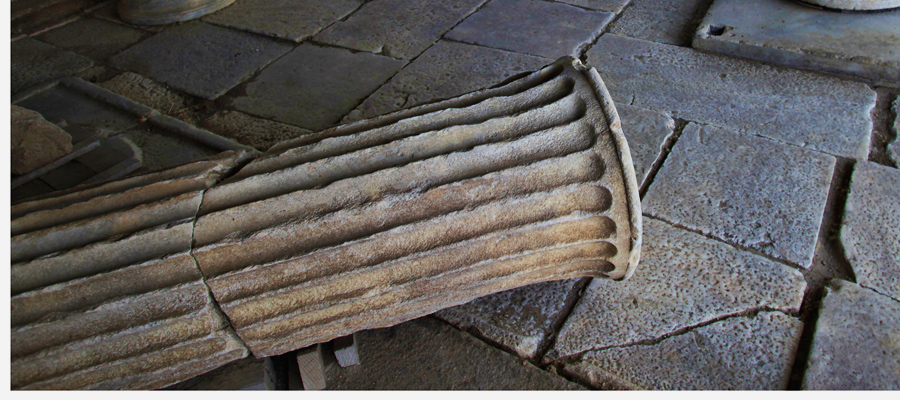The medieval cemetary of Ierissos
The medieval cemetery of Ierissos was discovered in 1984, whereas the excavation in the cemetery of Akanthos, located in the same place had begun in 1970. The expert on the subject is archaeologist Joachim Papaggelos, who participated with other of his colleagues in those initial excavations. Below are excerpts from the statement of Dr. Papaggelos in the 8th Symposium of Byzantine and post-Byzantine Archaeology and Art that took place in Athens by the Christian Archaeologic Company few years after the discovery of the archaeological site.
"The tombs were pits of simple construction, dug in the sandy ground. Rough plate blocks or fragments of Christian slabs or fragments of post-Roman sarcophagus supported most of the tombs’ walls. The covering plates were of similar material. The orientation was always W-E and every tomb had only one deceased (except a childern’s tomb that had two), lied down, with his hands crossed on his chest or, rarely, one on his chest and the other on the middle of the pelvis.
Several coins, made of copper mostly (earrings and rings), some silver (earrings) and necklaces made of beads of glass were discovered. Few coins (from Akanthos, unrecognized –probably roman) were found in the dirt embankments. Pottery was discovered only outside the tombs. These were fragments of ancient vessels and one and only feature Christian shell. Published coins from every Balkan country, similar to ours are dated from the 6th until the 12th century B.C.
According to common belief, the area of Ierissos was uninhabited before 883 when the Kolovou monastery was founded on the ruins of Akantho’s castle or beside it. In 924, residents of Ierissos are mentioned clearly for the first time, and it is known that the very much talked “Bulgarian slaves” settled in the area before 959. The oldest dated Glagolitic text of 982 comes from Ierissos. (The Glagolitic alphabet, also known as Glagolitsa (Глаголица in Russian) is the oldest known Slavic alphabet). With this finding, the same double question rises: Was it a new population in which Slavic presence which was at least strong that settled in the deserted Akanthos around the early 10th century or during the same time, and for reasons that remain unknown, the population of Akanthos-Ierissos was increased with new people including a number of Slavs?
The discovery of the tomb is probably the begin of the answer and the following can be noted so far: A progressive shrinkage of the ancient cemetery and the “tidying” to the East has to be taken for granted, i.e. to the limits of the settlement where the cemetery of Ierissos was located until the terrible destruction of the village in the 1932 earthquake. The probable sustained continuation of life in the area is indicated by the preservation of the burial tradition for 26 centuries, as well as from the preservation of ancient names such as Stratoni.
A Turkish cemetery of the 17th-18th century was also discovered over classic burials in the same area. The fact that in 982, clearly Slavic named residents of Ierissos, sign by superb Greek, suggests the same result. Should it be considered that these are enviable results of a possible educational attempt by the newly established “Erissos Bishopric” or that the isolation of the newly settled, different nationality residents, in a Greek environment contributed to that? The continuance of the excavation is believed to provide the only essential possibility for the answer to the question".






